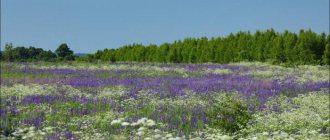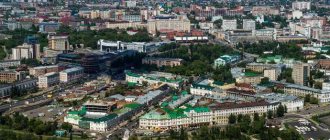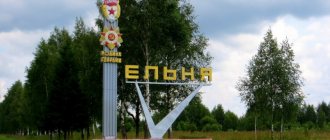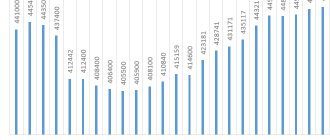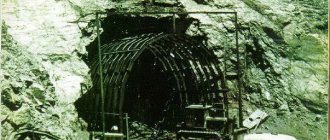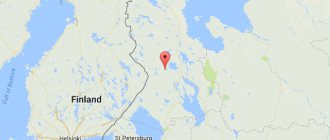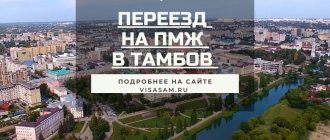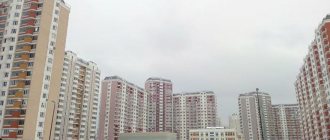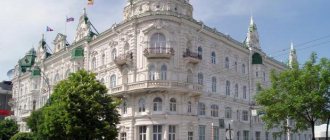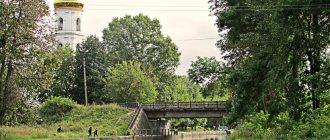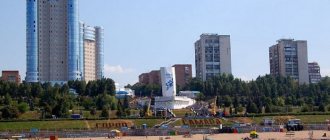Residents of the Orenburg region
The population of the Orenburg region has been steadily declining in recent years. Moreover, it grew until the mid-90s. It reached its peak in 1996, when the region’s population was 2 million 218 thousand 52 people. Since then, the population of the Orenburg region has been decreasing every year. Over 20 years, the loss amounted to about 30 thousand people.
In general, statistics on this area in Russia have been kept since 1897. Then in Orenburg and other cities, towns and villages, when asked how much is the population in the Orenburg region, statisticians gave fairly accurate figures. A total of 1 million 600 thousand 145 people were registered.
Distinctive features and history of the Orenburg region
On this blizzard, unkind evening, When there is snowy darkness along the roads, You, dear, throw an Orenburg down scarf over your shoulders.
The well-known hit by Lyudmila Zykina All of us, Russians, imagine the Orenburg land as a snowy region, where all the women are wrapped in down scarves. For this, Orenburg residents should be grateful to the Soviet singer Lyudmila Zykina, who created such a vivid and rather unlikely image in the minds of millions of people.
In fact, the Orenburg region is a region in the south of the Urals, where it is warmer than in most of the country. In general, this territory became part of Russia back in the 30s of the 18th century, when local Bashkirs and Kazakhs decided that it was easier to be dependent on Russia than to try to somehow exist themselves. In principle, this is a normal strategy; it was followed by the majority of small nations that eventually became part of the Russian Empire.
Composition Good Angel of Peace. Photo by Olga (https://fotki.yandex.ru/users/olga57orb/)
Since then, the lands of the Orenburg region began to be actively populated by settlers from the central regions of the country. Initially, the Orenburg province was of such frightening proportions that its southern border ran along the northern shores of the Aral Sea. Then a whole mess began with the territorial structure here. In 1920, on the site of the Turgai, Ural, Semipalatinsk, Orenburg regions and part of the Transcaspian region, the Kirghiz Autonomous Soviet Socialist Republic was organized, which in 1925 was renamed the Cossack Autonomous Soviet Socialist Republic, and the capital of this autonomy was located in Orenburg.
Next, the party leadership thought and consulted and withdrew the capital from the Cossack Autonomy along with the adjacent territories. The modern Orenburg region became part of the Middle Volga region, which after some time was renamed the Middle Volga region. Five years passed, and the Bolsheviks again decided to change something. This time, the Soviet authorities removed the Orenburg region from the Middle Volga region. It would seem, thank God, a reasonable decision, but no. Less than five years later, the regional center, the city of Orenburg, was renamed Chkalov, in honor of the legendary pilot. The logic here can hardly be traced at all. Chkalov had never even been to Orenburg. The Chkalov region was renamed again to the Orenburg region, 20 years later, by Nikita Sergeevich Khrushchev. Since then, no one else has encroached on the name of the region.
The Orenburg region can be proud not only of stories of renaming and legendary songs, but also of no less legendary fellow countrymen. There is no point in naming all the talented and famous people who were born in the Orenburg region; we will focus on only three: Chernomyrdin, Shatunov, Guzeeva. All of them influenced Russia in different ways, but they left a mark. Guzeeva is currently the idol of all housewives, and can safely create a women’s party from those over 40. They will definitely get into the State Duma. Shatunov, due to his youth, drove millions of Soviet girls crazy, who are now ready to follow Guzeeva to the ends of the earth.
Bridge in Orenburg. Connects Europe and Asia. Photo by Marina (https://fotki.yandex.ru/users/marnat108)
Let’s take a closer look at the figure of Viktor Stepanovich Chernomyrdin. Because he deserves it. For five years, Chernomyrdin headed the Government of the Russian Federation. The period of his work in the highest echelons of Russian power occurred during the most difficult years in the history of the country. Older people will never forget the famous negotiations between Chernomyrdin and Shamil Basayev, which the politician conducted after the terrorist attack in Budennovsk. It was not possible to save everyone, but Chernomyrdin persuaded the terrorist to release most of the hostages. Younger Russians will remember Viktor Stepanovich thanks to the performances of comedians who mercilessly parodied the politician and ridiculed his unique speech and amazing turns of phrase:
“We wanted the best, but it turned out as always.” — No matter what party we make, everything works out for the CPSU. - When my country is in this state, I will do everything, I will say everything! When I know it will help, I won't hold it back. - We! To go to some kind of wishlist, I apologize... There’s nothing to arrange here, I don’t want to, I don’t want to - Well, what should we unite with him? He has a cap, and I’m not wearing anything at all yet. (About Luzhkov.)
Geographical position
By Russian standards, the Orenburg region is not large. Its area is only 123,700 km², which is 3 times the area of the Netherlands, Denmark or Switzerland. In Russia, the Orenburg region ranks only 29th in terms of area. The region's territory is located at the southern tip of the Urals, Trans-Urals and the southeastern part of the East European Plain. The Orenburg region extends 755 km from west to east, and 425 km from north to south. The region has the largest border with Kazakhstan.
Population
According to the latest data, the population of the Orenburg region has already exceeded 2 million people. In total, 2,008,566 people live in the region. The population density will seem ridiculous to the Chinese or Japanese - 16.23 people/km2 (2014). Almost 60% of Orenburg residents are urban residents.
Since 2012, the region's birth rate has exceeded death rates. The average Orenburg family consists of 3.3 people, which suggests that there is a tendency for families to have a second and even a third child. The age composition of the region is such that 17% are pensioners, 67% are the working population, and the remaining 15% are children and youth.
Three quarters of all residents of the region consider themselves Russian; there are communities of Tatars, Ukrainians, Bashkirs, Mordvins and Kazakhs in the region. In percentage terms, Tatars are approximately 8%, Kazakhs - 6%, Ukrainians - 2.5%, Bashkirs - 2.3%. Other nationalities are represented insignificantly.
Figure of a Sarmatian deer. Photo by Marina (https://fotki.yandex.ru/users/marnat108)
You can only partially trust the statistics for the Orenburg region. Small peoples such as the Chuvash or Mordovians are heavily mixed with the Russians, and many, to simplify things, no longer pay attention to their true roots.
Crime
In the 90s, Orenburg was the gateway to Asia. Drugs were supplied through the region to Russia, and this was a feeding ground for bandits. Because of this, the region was regularly shaken by criminal conflicts, which resembled military operations rather than a dialogue between serious people. To this day, for example, the grave of the famous local crime boss Sergei Babnishchev reminds of that time. In the cemetery where the mafioso is buried, an eight-meter crucifix of Christ was erected in his honor. It is curious that a music center was built into the coffin of the crime boss, and at first sad music from underground was heard at the man’s grave. The mafia guarded Babnishchev’s burial site as an honor guard.
The Orenburg region became calm only in the middle of the last decade, when the last authorities retired or simply chose more peaceful ways to resolve conflicts. In recent years, pedophilia has become a resonant criminal topic in the life of Orenburg and its environs. A sect engaged in such debauchery was discovered in the city. Moreover, one of the child molesters was Honored Artist of Russia Grigory Cheblakov. Unfortunately, such scumbags are still detained in the region.
Unemployment rate
In the Orenburg region there is no unemployment rate, there is a “employee” level. If desired, everyone can find something to do here. The region is quite developed, but there is a problem that prevails in most regions of Russia - there is work, but the salary level is not satisfactory. Sellers, service personnel and builders can find a job without any problems. Representatives of other professions need to try or retrain as sellers, service personnel or builders.
Orenburg gas scraper. Photo by Dmitry Zolotarev (https://fotki.yandex.ru/users/dgzolotarev/)
In Orenburg, Orenburggazprom is considered the city-forming enterprise. If you are lucky enough to get a job here, then consider that life is good. In general, in the region the average salary is 22 thousand rubles. You can’t do much with this money, but it’s possible to live.
Property value
You can buy a house in the region inexpensively, but here, as elsewhere in Russia, there are few people who want to live in the village. Young people are trying to go to the regional center, but the situation there is completely different. On average, the price per square meter of housing in Orenburg exceeds 50 thousand rubles. To buy a normal one-room apartment you need to have an amount of no less than two million rubles. Not everyone can save so much money, but a mortgage was invented especially for such people, and a large number of Orenburg residents have already fallen into bondage.
Climate
The climate in the Orenburg region is temperate continental; closer to the western border of the region, a sharply continental climate predominates. Summer in the Orenburg region is hot and dry. Five months of the year are warm, five months are cold, two are moody. In winter, temperatures can drop to −40 °C. The average annual temperature in the region is +5.3 °C, which is quite warm by Russian standards.
Fertility dynamics
The number of births in the Orenburg region per 1 thousand population is 14.6 people. A significant increase in this indicator began in the early 2000s. So, if in 1999 there were 9.1 children born per thousand inhabitants, then after three years this figure increased by more than one and a half units.
The constant increase in the birth rate in the region continued until 2010, when it amounted to 14.1 children per thousand inhabitants. After this, successful years alternate with unsuccessful ones in terms of fertility.
Dynamics of mortality
In general, mortality in the Orenburg region has been increasing in recent years. This, of course, is reflected in the current population of the Orenburg region.
Scrupulous mortality statistics have been kept since 1970. Then 7.9 people died per thousand inhabitants. Since then, the number of deaths has increased every year. In 2005, this figure almost doubled and amounted to 15 and a half deaths per thousand inhabitants. In recent years, close attention has been paid to healthcare in the region, as well as throughout the country. Therefore, the statistics were able to stabilize. According to the latest data from Rosstat, 14.2 people die every year per thousand Orenburg residents.
Administrative subordination includes:
Village councils:
- Village Council Nizhnepavlovsk
Settlements:
- Settlement Gorny
- Settlement Yuny
- Settlement Zauralny
- Settlement Western
- Settlement Fruit nursery
- Settlement Vesenny
- Settlement Karavanny
- Settlement Beregovoi
- Settlement Uzlovaya
- Settlement Airport
- Settlement Pervomaisky
- Settlement Railway junction N20
- Settlement Svetlogorka
- Settlement Stepnoy
- Settlement Experimental
- Settlement Solovyovka
- Settlement Prigorodny
- Settlement Priuralsky
- Settlement of Yarovaya
- Settlement Peaceful Path
- Settlement Pugachevsky
- Jelandy Settlement
- Settlement Chebenki
- Settlement Bakalka
- Settlement Bylinny
- Settlement Shoots
- Settlement of Chkalov
- Lenin's settlement
- Settlement Clean
- Settlement Blagoslovenskoe Forestry
- Settlement Forestry
- Settlement Cold Keys
- Settlement DNT Kamennoozernoye-2
- Settlement Komsomolskoe forestry
Territories:
- Territory Suburban village council
Villages:
- Village Nizhnepavlovsk Camps
Passage:
- Passage 17 km
- Passage 1506 km
- Passage 19 km
Villages:
- Village Voskresenovka
- The village of Blagoslovenka
- Brodetskoye village
- Village Dedurovka
- Village Zubarevka
- Village Ivanovka
- Village Kamennoozernoye
- Village named after 9 January
- Village Staritsa
- Nezhinka village
- Village Nizhnyaya Pavlovka
- Nikolskoye village
- Podgorodnyaya Pokrovka village
- Village Belenovka
- Village Vyazovka
- Panika village
- The village of Sergievka
- Village Mazurovka
- Priyutovo village
- Village Strukovo
- Village Repino
- Village Prechistinka
- Village South Ural
- Village Chernorechye
- Arkhangelovka village
- Pavlovka village
Station:
- Donguzskaya station
Districts of the Orenburg region
The population of the Orenburg region is distributed over 35 districts. Among them there are also leaders and laggards in terms of the number of residents. Municipalities that have industrial production and prospects for development and investment are developing more intensively than others. People from backward areas leave en masse every year for Orenburg and neighboring regions.
The population of the districts of the Orenburg region has, for the most part, been declining in recent years. The leader is the Pervomaisky district with its capital in the village of Pervomaisky. Almost 90 thousand people live here. At the same time, the main economy of the region is the development of agricultural products. Pervomaysky specializes in meat and dairy farming and grain growing. There are 18 large and medium-sized agricultural enterprises in the region, as well as almost one hundred peasant farms. There is also industry in the area. The oil industry is developed here. About 800 kilometers of gas pipelines have been laid across the Pervomaisky district.
Among the lagging behind is the Matveevsky district, located in the northeast of the region. Only 11 thousand 209 people live here. The administrative center is the village of Matveevka. Only agriculture is developing in the area. The enterprises specialize in growing potatoes and sunflowers. There are three cooperatives (analogues of Soviet collective farms) and several individual entrepreneurs in the area.
In general, the Orenburg region is a dynamically developing Russian region. It ranks fourth among the oil-producing regions of Russia. It accounts for 4.5% of all oil produced in Russia. Therefore, it is not surprising that the fuel industry is the leading industry. Most of the oil fields are concentrated in the already mentioned Pervomaisky district, as well as in Sorochinsky and Kurmanaevsky.
Oil, which the Orenburg region is rich in, is a fundamental part of the Volga-Ural reserves of this mineral. The development of oil fields in these places began in the 30s of the 20th century near the city of Buguruslan. Nowadays, oil-bearing areas are regularly expanding.
Transport system of the Orenburg region, roads and routes. Cards
On the online map of the Orenburg region with borders you can monitor the development of the transport system. In terms of the length of highways, the region ranks 7th throughout Russia. Their total length exceeds 13.5 thousand km. Both federal and regional highways pass in the directions “West-East” and “Center-Central Asia”. Due to its location, the Orenburg region connects the European part of the Russian Federation with Asian countries.
Regional roads provide passenger transportation throughout the region. Thus, more than 480 suburban and intercity bus routes have been opened, as well as over 200 city and intra-village routes.
If we talk about railway transport, then there are 2 branches of Russian Railways in the region: the Orenburg branch of the South Ural Railway and the Samara branch of the Kuibyshev Railway. They carry passenger and freight traffic. Moreover, the volume of freight turnover in railway transport is growing every year.
In the “heart” of the region there is also a large air hub – Orenburg International Airport. The airport is used not only for passenger transport. It carries out flights of air ambulances, aircraft involved in rescue and search operations, as well as in agriculture.
Cities of the Orenburg region
The cities of the Orenburg region are significantly larger in population than rural areas. Almost 580 thousand people live in the regional center. There are 21 cities in the Orenburg region.
Large settlements, in addition to Orenburg, are Orsk (235 thousand inhabitants), Novotroitsk (96 thousand) and Buzuluk (85 thousand).
Industrial production is developed in Orsk. There are enterprises in mechanical engineering, oil refining, non-ferrous metallurgy, geological exploration, energy, construction and the food industry.
The economy of Novotroitsk is built on companies engaged in the manufacturing industry, metallurgy, waste and scrap metal processing, and food production. The city-forming company is Ural Steel OJSC. This is the largest metallurgical plant.
In Buzuluk in the 60s of the last century, oil fields were actively developed. The enterprises even managed to enter the international market, and Buzuluk was called the oil capital of the Orenburg region. However, in the last ten years there has been practically nothing left of the industry. A large furniture factory has closed, machine-building factories have gone bankrupt, and oil and gas production enterprises have seen a decline in oil production. Therefore, Buzuluk now remains one of the most depressed cities in the entire region.
Orenburg region
The region is located at the junction of two parts of the world - Europe and Asia. The region's territory covers the southeastern edge of the East European Plain, the southern tip of the Urals and the southern Trans-Urals. The length of the region from west to east is 760 km, from north to south - 445 km.
The total length of the borders is 3,700 km. In the west, the Orenburg region borders with the Samara region, in the north-west - with Tatarstan, in the north - with Bashkortostan (the northern border from the Ik River to the Ural River goes around Bashkortostan), in the north-east the region borders with the Chelyabinsk region, and in the east and south - with Kazakhstan. It borders the Saratov region at one point, which is located on the state border with Kazakhstan - the junction of the borders of the Orenburg, Samara and Saratov regions. The border with Kazakhstan is 1670 km, it falls on three regions of Kazakhstan: Kostanay, Aktobe and West Kazakhstan. The borders that exist today were established on December 7, 1934.
On the territory of the region there are the Orenburg Nature Reserve and General Syrt. One of the largest and most beautiful rivers in the European part of Russia, the Ural, flows through the region.
The nature of the Orenburg region is quite diverse. Dry-loving herbaceous vegetation dominates in the Orenburg region. Forests occupy only about 4% of the region's total area.
Medicinal plants that grow in the region: licorice, small-leaved linden, laxative buckthorn, St. John's wort, bird knotweed, valerian officinalis, kupena officinalis, oregano, ephedra two-spikelet, lily of the valley, kupena officinalis, female kochedednik, male rosemary, etc.
Wild fruiting shrubs: blackberries, strawberries, steppe cherries, stone fruits, prickly plum (thorn), rose hips, Siberian hogweed. Honey plants: caragana tree, caragana bush, rowan, common viburnum, willow, dandelion, coltsfoot, steppe strawberry, small-leaved linden, mouse pea, sweet clover, chicory, thistle, etc. Essential oil plants: wormwood, bison fragrant, Mugojar thyme, Marshall thyme, Kyrgyz thyme, water mint, peppermint, fragrant woodruff.
About 100 species of wild flora belong to the group of fruit and berry plants. Vitamin plants - gray blackberry, wild strawberry, steppe strawberry, steppe cherry, prickly plum (thorn), water chestnut (chilim), etc. (Fig. 65). Cattails, white water lilies, and yellow water lilies have a high starch content. Sugar is accumulated by the warty birch.
More than 300 plant species in the Orenburg region belong to the melliferous species. Spring honey plants include yellow acacia, mountain ash, willows, coltsfoot, and steppe strawberries. Summer honey plants - small-leaved linden, mouse peas, yellow and white sweet clover, chicory, raspberries, etc.
Many types of plants contain a complex mixture of coloring pigments and impurities. They are used for dyeing food products, fabrics, wool, and carpets.
The Orenburg region is rich in forage plant resources: cereals (wheatgrass, wheatgrass, fescue, bromegrass, bluegrass), legumes (clover, astragalus, vetch, sainfoin) and a large number of forbs.
The vegetation of the Orenburg region has been exposed to human influence for a long time, negative examples of which are plowing land, cutting down forests, draining swamps, mining, and applying fertilizers and pesticides. Some plant species have disappeared, others are on the verge of extinction. About 145 plant species belonging to 50 families and 110 genera are listed in the Red Book of the Orenburg Region.
The distribution, numbers and diversity of animals in the Orenburg region are closely related to the conditions of natural zones necessary for the existence of the animal world. These conditions are so diverse that inhabitants of both warm and cold countries have found shelter here: the white partridge, an inhabitant of the Far North, and the black vulture, a resident of warm regions.
Currently, more than 280 bird species have been recorded in the region. Before plowing, the Orenburg steppes were densely populated by such large birds as the bustard, little bustard, demoiselle crane, and gray partridge. Nowadays, these species are becoming increasingly rare.
Typical for the steppes are diurnal predators: the steppe eagle, imperial eagle, buzzard, as well as small falcons: falcon, kestrel. Near steppe reservoirs you can see the harrier. Various species of larks live here: wagtail, lapwing, steppe tirkushka, and the rare lapwing. The objects of hunting are gray goose, mallard, and sandpiper. At the same time, species listed in the region’s Red Book are found in the reservoirs: red-breasted goose, avocet, and stilt.
The forests of the region are inhabited by: capercaillie, black grouse, hazel grouse, great spotted woodpecker, woodpecker, and raven. The decoration of floodplain forests in the Urals is the white-tailed eagle.
More than 80 species of mammals live in the region. The common hedgehog is found in all regions, but the long-eared hedgehog can be found only along the left bank of the Urals. Only in the floodplains of the Ural and Ilek rivers has the population of the Russian muskrat been preserved. In the northern regions of the region, the common mole is common.
The region is home to 11 species of bats. The most common are: long eared ears, two-color leather jacket, giant noctule. In steppe pastures, arable lands, vegetable gardens, and near populated areas you can find the gopher and marmot. The common beaver is widespread along forested rivers. The northern otter is endangered. It can be found on the Sok River in the Northern District and on the Ural River in the Belyaevsky District. The largest family of mammals in the region are hamsters. The most common species in meadow-steppe and agricultural lands is the field mouse, and in forests - the little mouse, the wood mouse, the yellow-throated mouse. Garden dormouse is found in gardens, deciduous and mixed forests of Western Orenburg.
In the valley of the middle reaches of the Urtaburtya River, near the mouth of the Guberlya River, an inhabitant of the rocky steppes of the Ural-Tobolsk Plateau is the steppe pika (hayfowl). The jerboa settles in the open expanses of the steppe. The brown hare and, less commonly, the white hare find refuge in the bushes.
The brown bear is an exotic rarity for the steppe Orenburg region. Currently, it lives in the forested areas of Small Nakas and Shaitantau.
Common in the region: badger, ermine, pine marten, weasel. Rare animals include: European mink, bandage, weasel. Wild boar are being resettled in the region. Elk and roe deer and red deer are found in forest areas.
Of the reptiles, of which 12 species live in the Orenburg region, you can find the marsh turtle, lizards, snakes and vipers. In the southern and central regions of the region, the patterned snake is found in the meadow steppes. The copperhead can be seen in all areas.
The habitats of frogs and newts are associated with lakes, ponds and river reaches with standing water. Everywhere: in forests, gardens, vegetable gardens and meadows you can see toads.
Over 60 species of fish live in the rivers, streams, lakes, reservoirs and ponds of the region: asp, bream, pike perch, tench, podust, pike, perch, chub, ide, rudd. Burbot is common in rivers with rocky bottoms. Catfish live in rivers and lakes with deep reaches.
Orenburg
The main population of the cities of the Orenburg region is concentrated in the regional capital. More than a quarter of all residents of the region are registered here.
The city was founded in 1743 on the site of the Berd fortress. Today Orenburg has a well-developed economy. Industry is based on the gas production and gas processing industries, as well as metal processing and mechanical engineering. There are enterprises in the chemical, light and food industries.
Among the unique enterprises, it is necessary to highlight OJSC Orenshal, which produces the famous Orenburg down scarves; in addition to it, there is also a plant for Orenburg scarves. produces agricultural machinery.
Since the beginning of the 21st century, the situation in Orenburg has stabilized after the crisis of the 90s. The economic success of the city is largely related to the successful development of the Gazprom Dobycha Orenburg enterprise.
Orenburg University began active construction of new buildings, modern sports facilities and the ethnographic complex “National Village” appeared.
Composition of the population of the Orenburg region
The majority of residents of the Orenburg region are Russian by nationality. Their number is about 75%. In second place are Tatars - almost 7.5% of the inhabitants of this nationality in the region; in third place are Kazakhs - almost 6%.
More than two percent of the region is inhabited by Ukrainians and Bashkirs. Slightly less than two percent of representatives of Mordovian nationality.
The number of other residents of the region does not exceed 1%. About one and a half percent of residents during the last census refused to indicate their nationality.
Indigenous people of the Orenburg region
Initially, the population of the Orenburg region was formed by the Tatars. Now there are about 150 thousand of them left in the region. The Tatars were the indigenous inhabitants of the Orenburg region. Now they live compactly in several districts - Abdulinsky, Buguruslansky, Krasnogvardeysky, Matveevsky, Tashlinsky and Sharlyksky.
In total, there are almost 90 Tatar settlements in the region, where the number of residents of this nationality predominates. In these cities and towns, the Tatar language is studied at school; 34 Tatar preschool institutions have been opened in the Orenburg region. There are more than 70 mosques in the Orenburg region.
Natural features of the area, rivers and lakes.
If you look at the satellite map of the Orenburg region, you can see that it is located at the junction of Europe and Asia.
There are no high peaks in the Orenburg region - the highest point is the city of Nakas (667.6 m.). The territory is mainly covered with forest-steppes, steppes and forests. Due to the remoteness from the seas and oceans, the climate in the Orenburg region is sharply continental, characterized by low precipitation. The water map of the region is represented by rivers (the largest is the Ural), lakes (the largest is Shalkar-Ega-Kara) and artificial reservoirs. The region is home to a variety of flora and fauna, which is why there are 2 nature reserves - Orenburgsky and Obshchiy Syrt.
Orenburg Bashkirs
The Bashkirs play an important role in the formation of the national composition of the Orenburg region. Most of them live in Orenburg itself - about five and a half thousand people.
In Orenburg there are many monuments dedicated to the culture and history of the Bashkir people. In the regional capital there is a monument to the Caravanserai. This is a historical and architectural complex that was built in the middle of the 19th century. The complex was built using voluntary donations. It housed the residence of the commander of the Bashkir army. There were also hotels here for the Bashkirs, who regularly visited Orenburg on official business. The complex itself includes the Bashkir People's House and a mosque. The author of the original project is architect Alexander Bryullov, who developed the stylization of the main building as a traditional Bashkir village.
During the Civil War, the Caravanserai was the seat of the government of Bashkiria. In 1917, at one of the meetings, a decision was made to create the territorial autonomy of Bashkurdistan, which was to include the Orenburg province.
